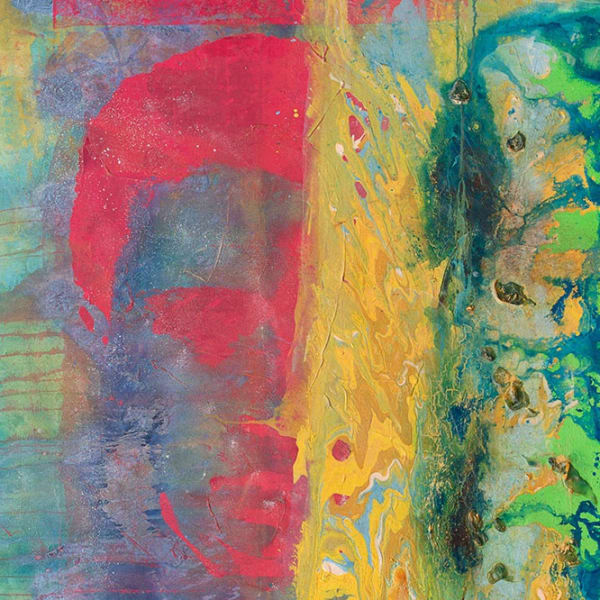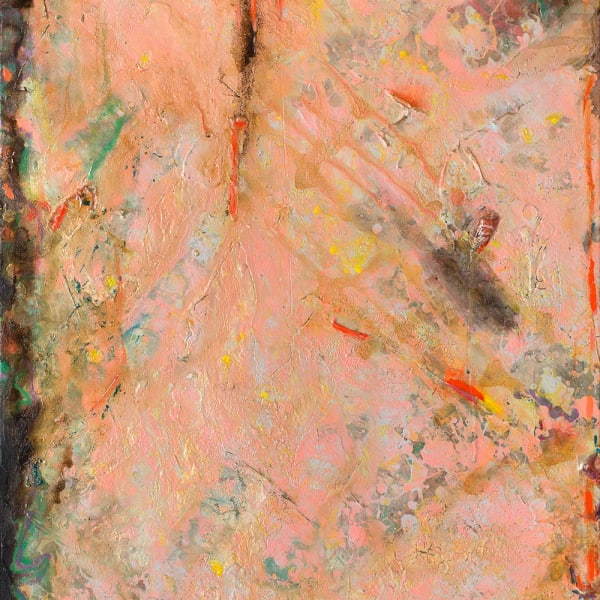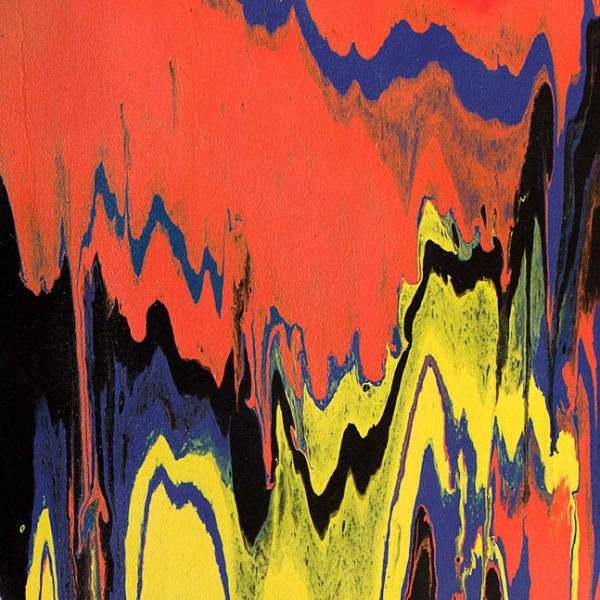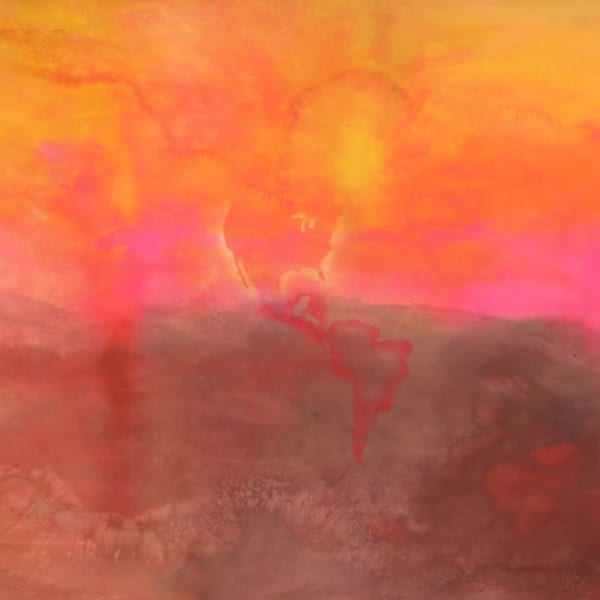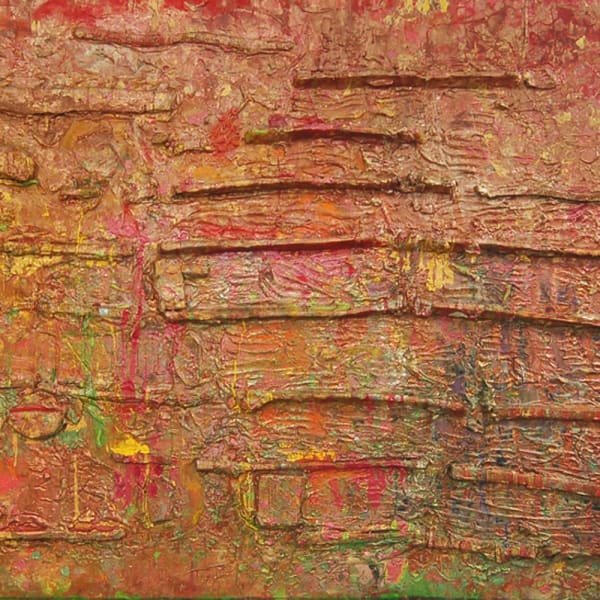Sir Frank Bowling RA
-
Overview
Sir Frank Bowling RA (b. Guyana, 1934) moved to London in 1953, where his artistic career began shortly after his arrival at the Royal College of Art (1959-62). The artist has since established studios in both New York and London.
Bowling began as a figurative painter incorporating personal and political imagery, before moving to New York in 1966, where he made a decisive turn towards abstraction. In this career-defining moment, he developed a process-based practice, exploring the nature and possibilities of paint. Through his monumental colour field paintings, he cemented himself in the competitive New York scene. His pictures, which had always inclined towards a frontal geometric structure of space, became more geometrically complex, guided by principals of mathematics and symmetry. It is during this transitional period in the mid- to late-‘60s that Bowling’s seminal body of work, the Map Paintings – a series of quasi-abstract colour fields overlaid with stencilled images of maps of Australia, South America and Africa – was produced.
In 1971, Bowling met Clement Greenberg, who not only became a regular visitor to the artist's studio, but also an important influence to Bowling. Greenberg’s advice and encouragement helped remove any lingering doubts Bowling might have had about his commitment to modernism. The narrative present in Bowling’s earlier work was replaced by an increasing focus on material, process, and colour. By this time, Bowling had developed a very personal palette for his large, light-filled, lyrical colour abstractions that distinguished his work from that of earlier Colour Field painters working in the USA such as Kenneth Noland, Jules Olitski or Larry Poons. However, never content to stop exploring and experimenting with paint, Bowling continued to innovate with new processes. He subsequently developed a special mechanical apparatus which tilted the canvas so he could pour paint onto it, creating the spontaneous fusions of layer and colour now known as the iconic Poured Paintings.
In the early 1980s, the influence of geometry became visible not just in Bowling's paintings, but also in the way he worked with canvas. He started using chunks of Styrofoam to create quasi-sculptural relief, a technique the artist continues to use today. Indeed, Bowling’s recent works produced over the last few years continue to explore the nature and possibilities of abstract painting, the diverse range of principles and processes explored across his career now converging and coalescing in dynamic new configurations of colour and form. This new period of painterly experimentation has received critical acclaim, and has recently been showcased in exhibitions in the UK and US. Bowling continues to orchestrate the emotive potential of colours to communicate a visual experience of uniquely sensuous immediacy.
Bowling’s paintings have been exhibited widely and internationally. In 2019, Frank Bowling’s major retrospective was held at Tate Britain, London. In 2017, Okwui Enwezor curated a comprehensive survey of Bowling’s large-scale paintings at Haus der Kunst in Munich, Germany, which has since toured to Irish Museum of Modern Art, Dublin, Ireland and Sharjah Art Foundation, UAE (2018). In 2005 Bowling became the first black artist to become a Member of the Royal Academy of Art and in 2008 he was awarded an OBE for his Services to art. In 1967 and 1973 he received a John Simon Guggenheim Memorial Fellowship, helping to fund his practice in New York. Selected solo shows include Dallas Museum of Art, TX, USA (2015); Spritmuseum, Stockholm, Sweden (2014-2015), Royal Academy of Arts, London, UK (2011); Serpentine Gallery, London, UK (1986); Whitney Museum of American Art, New York, NY, USA (1971). Bowling’s work can be found in numerous public and private collections including the Michael Buxton Collection, Melbourne, Austrailia; Metropolitan Museum of Art, New York, NY, USA; Museum of Modern Art, New York, NY, USA; Tate Gallery, London, UK; Dallas Museum of Art, TX, USA; Minneapolis Museum of Art, MN, USA; Moderna Museet, Stockholm, Sweden; Museum of Fine Arts, Boston, USA; Royal Academy of Arts, London, UK; Victoria & Albert Museum, London, UK and the Whitney Museum of American Art, New York, NY, USA.
-
Exhibitions
-

Frank Bowling
More Land than Landscape 10 May - 22 Jun 2019 LondonHales London is delighted to announce More Land Than Landscape , a solo exhibition of Frank Bowling OBE RA’s most recent paintings. The exhibition coincides with Bowling’s major retrospective at...Read more -

Unlimited, Art Basel
Frank Bowling 14 - 17 Jun 2018 Art FairsUnlimited, Art Basel Booth U62, Hall 1.1 Switzerland Preview days: 12th - 13th June Public days: 14th - 17th June Hales Gallery, in collaboration with Alexander Gray Associates, New York,...Read more -

Frank Bowling
Fishes, Wishes in Summertime Blue 8 Sep - 28 Oct 2017 LondonHales Gallery is delighted to announce Frank Bowling: Fishes, Wishes in Summertime Blue , a solo exhibition of Bowling’s very recent works. The exhibition coincides with Frank Bowling: Metropolitanblooms ,...Read more -

Frank Bowling
Metropolitanblooms 6 Sep - 15 Oct 2017 New YorkHales Project Room, New York Hales Gallery is pleased to announce the first exhibition in the new Project Room on the Lower East Side: a solo presentation of works from...Read more -

Frank Bowling OBE RA
The Poured Paintings 11 Sep - 24 Oct 2015As part of an ongoing series of shows devoted to the career of influential painter Frank Bowling OBE RA (b. 1936 in British Guiana) Hales Gallery is delighted to announce...Read more -

Frank Bowling OBE RA
The Map Paintings 1967-1971 16 Oct - 23 Nov 2013As part of an ongoing series of shows devoted to the career of influential veteran painter Frank Bowling (b. 1936 in British Guiana) Hales Gallery presents Frank Bowling OBE RA...Read more -

Frank Bowling OBE RA
Recent Paintings 31 May - 27 Jul 2012Hales Gallery is pleased to present its second exhibition with Frank Bowling OBE RA. The exhibition focuses on works made over the past two years and have never been exhibited...Read more -

Frank Bowling OBE RA
Enter the Dragon: Paintings from the 1980s 1 - 30 Jul 2011This year, Frank Bowling O.B.E. RA, the much revered British abstract painter, celebrates his 75th birthday. Hales Gallery is proud to present Enter the Dragon , Frank Bowling's first exhibition...Read more
-



